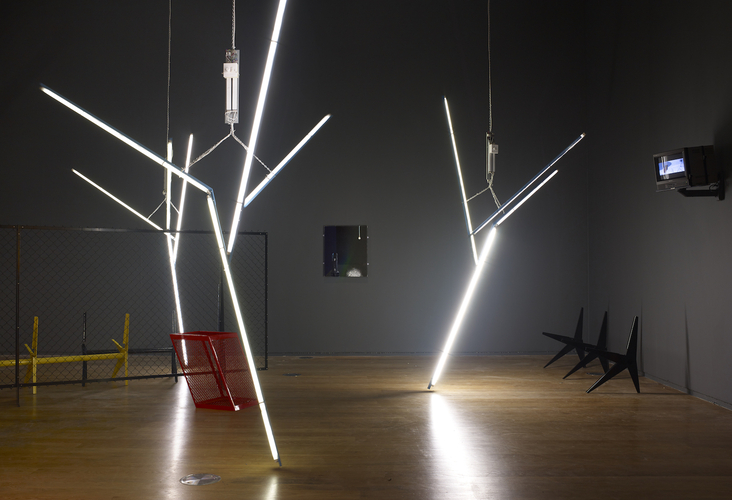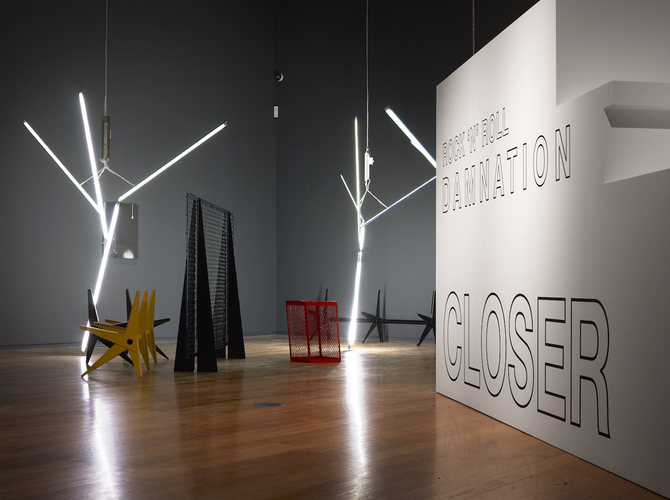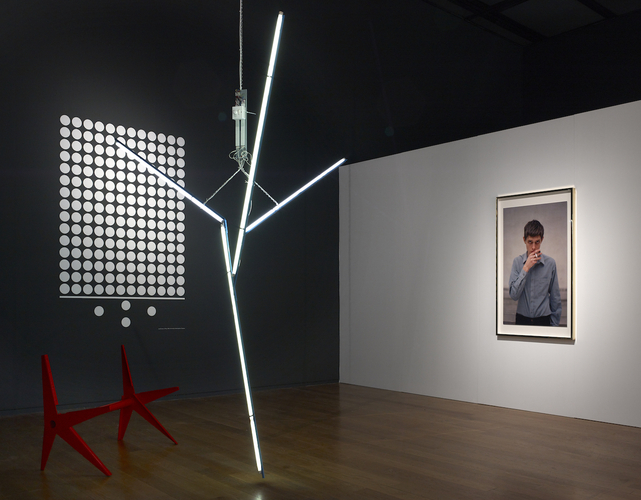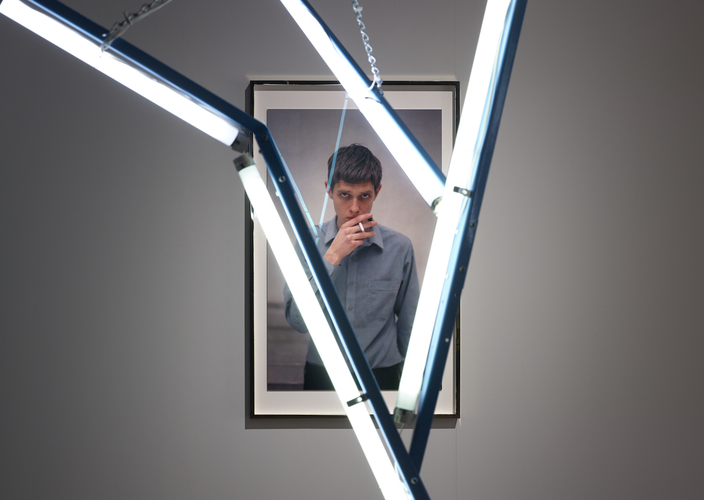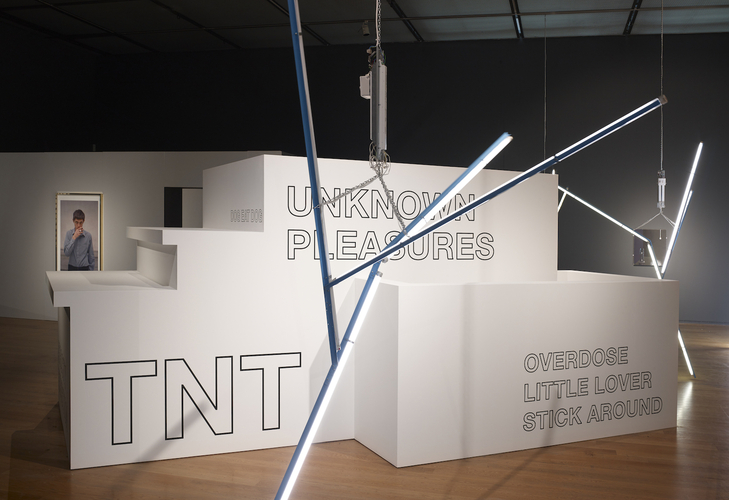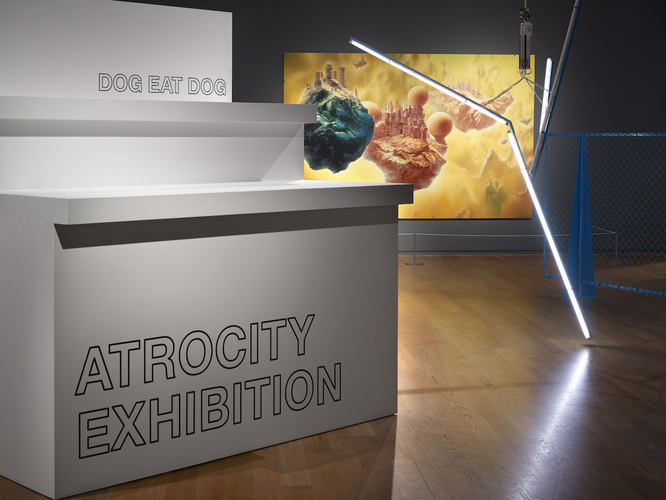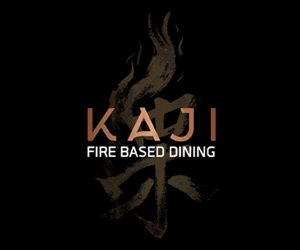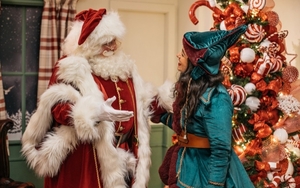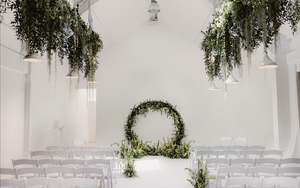Jonathan Payne gets thinking about nostalgia in a new exhibition devoted to the legacy of New Order and Joy Division
***
As you walk into the gallery, the long vitrine on your left displays Peter Saville’s album and 12” single covers, illustrating a terrific history of late twentieth century design – part of the reason why vinyl is making a comeback: artefacts to handle, mass produced art to ponder over, slightly more tactile than a download. It got me thinking about nostalgia, which the three curators want to get away from… but I’m immediately nostalgic seeing these records.
So, I wasn’t that convinced by the ‘legacy’ aspect of the exhibition. You have Julian Schnabel’s Ornamental Despair(Painting for Ian Curtis) (1980), you have the witty duo of the actual still life of A Basket of Roses the Henri Fantin-Latour’s painting that adorns the cover of Power, Corruption and Lies and Peter Saville’s postcard of the same that he bought from the National Gallery, side by side.
The first room is populated by the seatless benches, metal fences and fluorescent strip lighting of Malcolm Boyce’s Our Love is Like the Flowers, the Rain, the Sea and the Hours, a re-distributed installation (which made photographing anything in the room nearly impossible, not a problem I hasten to add, although photography is welcomed apart from one exhibit).
Dark Angel (for Ian Curtis) after Chris Foss (2002) by Glenn Brown, is a vast oil painting at odds with the largely monochrome aesthetic of Joy Division; I’m still pondering this one. As someone remarked – why is there an illustration from a Yes album here? Liam Gillick’s reproduced Scale Model of a Social Centre for Teenagers of Milan (1993) is a large white blocky construct with Joy Division and AC/DC song titles emblazoned in black around it. His stage set for New Order at Old Granada Studios is a lot more entertaining.
Jon Savage, one of the curators, explained that he was largely in charge of the second room, a terrific collection of posters, artworks and playbills. Despite having seen the famous Factory concert poster reproduced online and elsewhere many many times I’d never noticed the typos before – as Jon says, ‘well, yes, the old Letraset days…’. And I loved the Zoo-Factory concert double header offering travel advice ‘Use your wits or use the bus. No. 26 from Victoria’. And then there are the videos and concert footage…
New Order, and their American producer Michael H Shamberg, are responsible for two of the best pop videos in the short history of the genre, the utterly beautiful A Perfect Kiss (Jonathan Demme, 1985) and the utterly bonkers True Faith (Philippe Decouflé, 1987). In the former, the long takes, the tight focus, the minimalist framing, all work to reflect the increased layering of the song and the intense concentration of the quartet. Barney has his eyes closed whilst singing every word and the camera never leaves him – it’s hypnotic.
At the end there is a portrait of each of them – Hooky staring down the camera, Gillian looking anywhere but the camera, Stephen looking exactly the same in 1987 as in 1997 as in 2017. It is a perfectly measured bit of film, of a great song, and it has hardly been bettered as a record of a single. True Faith is simply a bundle of joy, bouncing, hilarious, intercutting concert footage with choreography which probably influenced The Teletubbies and David Lynch. It laid down a marker that very few other pop videos have matched.
Footage from a concert at the Apollo in 1979 is … horripilating – Ian Curtis’s twitching, flitting, eldritch movements are captured, and then he vanishes, suddenly, from the fixed angle of the camera. Transmission and She’s Lost Control, are as powerful now as they were then. Nostalgia? Not really. They’re as much out of their time now as they were back then.
True Faith, Manchester Art Gallery, 30 June - 3 September
Image credits: Matthew Pollard





